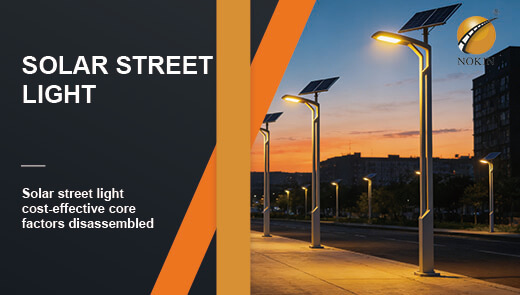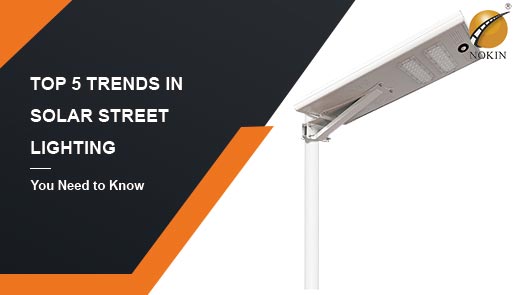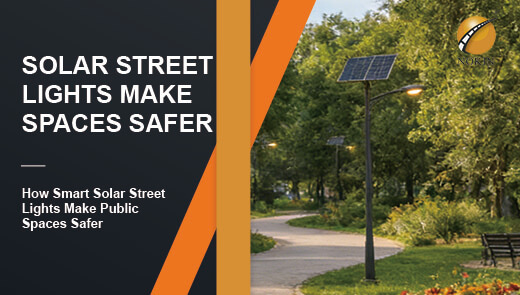Making the Switch to Solar Street Lighting
How have brightly lit streets changed our lives? It's the ability to walk home alone after dark, the ability to relax and dance in the square after dinner, the laughter of children in the playground, the hustle and bustle of the night market... Maintaining this brightness costs municipalities ever more in annual street lighting expenses. Add to that the occasional electrical failure, and the streets are plunged into darkness, creating a dangerous situation! So, it's time to switch to solar street lights!
Traditional street lights are a real hassle. Running wires and connecting to the power grid—just laying those cables costs a fortune. If you live in a remote area, installing street lights is even more challenging, as the power grid isn't even there. Even more frustrating is the constant threat of thieves targeting those copper cables, requiring repairs every time they steal, which is both expensive and time-consuming.
But things are different now. Solar street lights are becoming increasingly popular. They don't require a connection to the power grid; they generate power from the sun. Sounds reliable, don't they? In fact, solar street lights have long taken root in countless cities and villages, effectively solving lighting problems for residents and earning widespread acclaim. They're both safe and cost-effective. If you're not switching to solar street lights now, what are you waiting for? Switch sooner, save money sooner!

Now's the Perfect Time to Switch to Solar Street Lights
Solve Your Hassles
With solar street lights, you no longer have to worry about cable theft—there won't be any cables to steal. You don't have to worry about sudden power outages at night; they store their own power and light up when they're needed.
Installation is also simple. No need to dig trenches or lay cables. A few workers can quickly complete the job, eliminating the days-long traffic jams and disruptions to public transportation.
Everyone Who Uses Solar Street Lights Says They're Great
Did you know? Many cities have already adopted solar street lights. Whether it's city streets, parks, or rural paths, installing them brightens the night sky, saving money and making walking much safer.
In the past, installing grid-connected streetlights in remote villages was incredibly difficult. Not only was the initial investment high, but the frequent maintenance and replacements required after installation, coupled with the exorbitant electricity bills, created a bottomless pit. A single power outage could bring the entire village back to its former state. Installing solar streetlights has dramatically changed the situation. Not only does it save the expensive grid connection and electricity bills, but it also eliminates the complex wiring, making maintenance much easier. And there's no need to worry about power outages. It's a one-time solution. People are now more comfortable visiting friends and strolling in the evenings, bringing a much more lively atmosphere to the village.
How Do Solar Street Lights Work?
Solar Street Lights Basic Work Principle
Solar street lights consist of three main components: solar panels, batteries, and lamps. During the day, when the sun shines, the solar panels collect sunlight, converting it into electricity, which is then stored in the batteries. At night, as the sky darkens, the smart sensors in the solar street lights sense the dimming light and automatically activate the lights. The energy stored in the batteries during the day powers the LEDs, and when daybreak arrives, the lights automatically shut down and recharge, repeating the cycle. It's incredibly worry-free.
Smart Systems Are Powerful
Today's solar street lights are quite intelligent, with an intelligent system helping to manage them. They adjust their brightness based on the weather. For example, on cloudy days with limited sunlight and a limited battery, they automatically lower the brightness, leaving the lights on, saving energy and providing sufficient illumination for easy navigation. On sunny days with ample sunlight and sufficient daytime charging, they increase the brightness. Furthermore, people are more likely to go out on sunny days, and a brighter solar street light makes things more convenient.
Even if it's cloudy for several days in a row, don't worry; the lights will handle it. As long as there's light hitting the solar panels, they'll automatically recharge. While the charge capacity is limited, it won't shut off suddenly, which is truly reassuring.
Compared to Traditional Street Lights
|
Comparison Aspect |
Traditional Street Lights |
Solar Street Lights |
|
Installation Method |
Require numerous wires to connect to the power grid, complex construction |
No need to connect to the grid, ready to use once placed |
|
Wiring |
Complicated wiring, requires professional electricians |
Simple wiring; split-type requires minimal wiring, integrated type requires none |
|
Maintenance Difficulty |
Multiple cables, complex maintenance |
Easy maintenance; integrated design houses all components in the lamp head for simple servicing |
|
Battery Lifespan & Environmental Impact |
Limited lifespan, improper disposal may cause pollution |
Batteries can last for years and are recyclable when damaged, environmentally friendly |
Benefits of Switching to Solar Street Lights
You Can Save A Lot of Money
Although solar street lights are more expensive than traditional ones when purchased, they offer significant savings over time. The sheer cost of not having to pay for electricity alone can save you a lot over the course of a year.
They're also durable and can last for 10 to 20 years, significantly longer than traditional street lights, making them a great value.
Good for the Environment
Solar street lights use sunlight to generate electricity, eliminating the air pollution that coal-fired power does. They also reduce the use of traditional electricity resources. Therefore, the increased installation of solar street lights is significantly beneficial to the surrounding environment. More importantly, the components of solar street lights can be recycled and reused after they break down, eliminating the risk of waste and environmental pollution.
You Can Install Wherever You Want
Whether it's a remote mountain road or a coastal island, wherever there's sunlight, solar street lights can be installed. Because they don't require the hassle of running wires, installation is easy and simple, making them particularly convenient for installation on village paths or in your own yard.
Make Life More Comfortable
At night, when solar street lights are on, walking and cycling are safer, and bad actors are less likely to wander around. After installing solar street lights in residential communities and parks, more people are out for evening walks and square dancing, bringing closer neighborhoods and a more lively atmosphere.
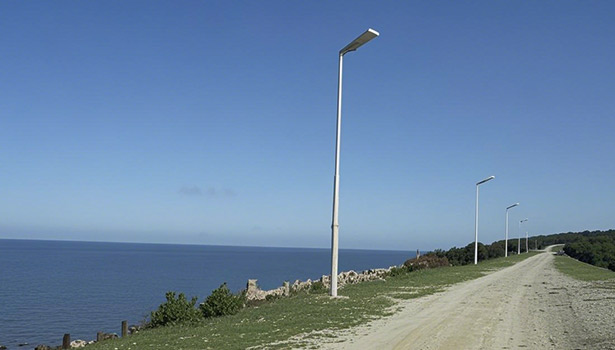
What to Consider Before Switching to Solar Street Lights?
It's important to clearly calculate the initial cost and long-term savings.
|
Comparison Item |
Traditional Street Lights |
Solar Street Lights |
|
Initial Cost |
Lower, mainly for lamps and wiring |
Higher, mainly for solar panels, batteries, and lamps |
|
Daily Electricity |
Requires constant electricity payments |
No electricity cost |
|
Maintenance Cost |
Frequent breakdowns, high repair expenses |
Low failure rate, minimal repair cost |
|
Service Life |
5–8 years |
10–15 years |
|
Total Cost |
Low initial investment but high cumulative electricity and maintenance costs over time |
High initial investment but almost zero cost in the later stages |
So, while solar street lights are more expensive initially, they can save you a lot of money in the long run.
What Can You Do if the Weather is Bad?
If the area where you're installing your solar street lights is often cloudy or if the daylight hours are short in winter, the solar panels will generate less electricity. However, this isn't a problem. You can choose high-efficiency solar panels and large-capacity batteries, which will provide enough power even when the sun isn't shining.
Plus, the smart system will help conserve electricity and ensure the lights stay lit at night.
Choosing the Right Installation Location
Choosing the right installation location is crucial when installing solar street lights. First, avoid installing them under large trees, and second, avoid installations in areas where tall buildings block sunlight. Solar panels need to be exposed to the sun, so you need to find a clear spot, such as one clear of trees or buildings. If your space is small, that's fine. These days, there are compact but powerful solar panels that can still be used.
Choose the Right Solar Street Light Based on Your Specific Situation
When purchasing, tell them where you want to install the lights, what kind of light you want, and how bright you want them. They'll recommend a suitable option based on your needs, ensuring smooth operation. You can consult with knowledgeable people or read relevant recommendations to choose the one that's best for you.
Process for Switching Solar Street Lights
Plan Carefully First
Consider the location where you want to install the lights, whether the light is sufficient, and whether there are any obstructions. Decide on the desired brightness and the number of lights you want to install. Ask if there are any local subsidies; any savings is appreciated.
Don't Be Careless During Installation
Find a reliable installer and choose a good location to ensure the solar panels receive sunlight and the light is easily visible.
Mount it securely so it won't blow over. After installation, test whether it works properly and whether it's responsive.
This is much simpler than installing traditional street lights. There's no need to dig trenches or lay wiring, so it's quick to install.
Perform Some Regular Maintenance
Occasionally wipe the solar panels clean of dust and avoid blocking sunlight.
Check the batteries for problems and repair them promptly if they do.
Remember when you've had repairs or parts replaced to make maintenance easier next time.
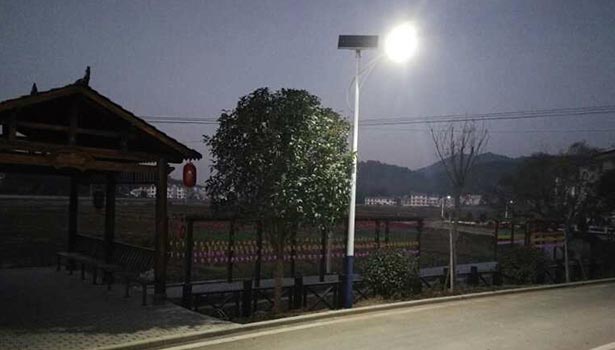
Summary
Solar street lights are truly great. They're cost-effective, environmentally friendly, and can be installed anywhere you want, saving you a lot of trouble.
Although you do need to consider factors like cost and weather when replacing them, as long as you choose the right ones and install them correctly, you'll definitely have no problems.
With increasingly advanced technology, solar street lights are becoming increasingly user-friendly and affordable. If you want to install street lights in your yard or on the paths in your village, you can really try solar power. Ask someone who knows about it, and quickly change it to experience its benefits!

